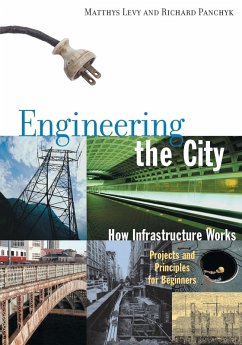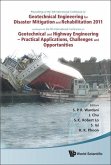How does a city obtain water, gas, and electricity? Where do these services come from? How are they transported? The answer is infrastructure, or the inner, and sometimes invisible, workings of the city. Roads, railroads, bridges, telephone wires, and power lines are visible elements of the infrastructure; sewers, plumbing pipes, wires, tunnels, cables, and sometimes rails are usually buried underground or hidden behind walls. Engineering the City tells the fascinating story of infrastructure as it developed through history along with the growth of cities. Experiments, games, and construction diagrams show how these structures are built, how they work, and how they affect the environment of the city and the land outside it.
Bitte wählen Sie Ihr Anliegen aus.
Rechnungen
Retourenschein anfordern
Bestellstatus
Storno


![Report on a Railway Suspension Bridge [microform]: Proposed for Crossing the St. Lawrence River at Quebec, Made to His Worship the Mayor and the City Report on a Railway Suspension Bridge [microform]: Proposed for Crossing the St. Lawrence River at Quebec, Made to His Worship the Mayor and the City](https://bilder.buecher.de/produkte/66/66148/66148283m.jpg)

![Articles of Association Establishing a Fire Assurance Company in the City of Quebec [microform] Articles of Association Establishing a Fire Assurance Company in the City of Quebec [microform]](https://bilder.buecher.de/produkte/65/65550/65550764m.jpg)

![Report on the City of Quebec, P.Q. [microform]: (superseding Previous Reports) Report on the City of Quebec, P.Q. [microform]: (superseding Previous Reports)](https://bilder.buecher.de/produkte/66/66155/66155654m.jpg)

